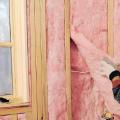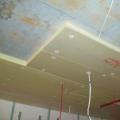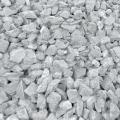How to build a house from aerated concrete
Let's talk about what materials are best to choose for building your dream home. And in this article we will talk about the construction of houses from aerated concrete. Currently, aerated concrete (aerated block) is considered one of the most high-tech, reliable and affordable materials for the construction of low-rise private houses. The material is made based on cement with an admixture of water, quartz sand and lime.
When the material is simultaneously exposed to temperature and pressure, the mass becomes saturated with bubbles. Thus, when aerated concrete hardens, it acquires many pores in its structure. This technology allows you to increase the volume of the material and provide it with increased lightness, excellent thermal insulation, durability, efficiency and fire safety. The construction of houses made of aerated concrete is carried out in several stages.
Stage 1. Preliminary site preparation for construction
If you have all the necessary design and estimate documents on hand, you can safely begin planning your construction site. At this stage, it is necessary to install a fence, then install lighting, and prepare scaffolding. Additionally, with the help of specialists, carry out geodetic measurements, determine the position of the axes of the future house, and determine the zero horizon (floor level of the 1st floor of the building). Next, all external communications should be installed.


Stage 2. Delivery and storage of aerated concrete
If, when purchasing blocks, you were unable to order their delivery to the construction site and are forced to deliver the material yourself, then consider the following facts:
Aerated concrete must be packed in a sealed film. Moisture should not get on the material during transportation.
Aerated concrete must be securely strengthened during transportation (soft slings can be used) to prevent possible mechanical damage.
Aerated concrete is stored in a cool, dry place under a canopy. It is advisable to protect the material from exposure to precipitation. It is best to store the material in a closed warehouse. In this case, the blocks should be stored on a level area with a maximum stack height of no more than two tiers.
The effect of climatic factors on aerated concrete
The exterior decoration of the walls of such buildings is carried out largely for cosmetic purposes. Aerated concrete does not collapse in rain or snow. Excess moisture during precipitation causes slight changes in the surface humidity of aerated blocks (by 20-30 mm in depth). The main damage occurs as a result of systematic wetting, when the liquid stagnates and is in contact with the masonry for a long time. To preserve the building, a reliable roof is built, as well as spillway systems and window sill drains. In addition, the internal surfaces of external walls made of aerated concrete in wet rooms are carefully treated with a waterproofing solution.
 Construction materials and list of works
Construction materials and list of works Proper insulation of a wooden ceiling in a private house
Proper insulation of a wooden ceiling in a private house What types of crushed stone are there?
What types of crushed stone are there?